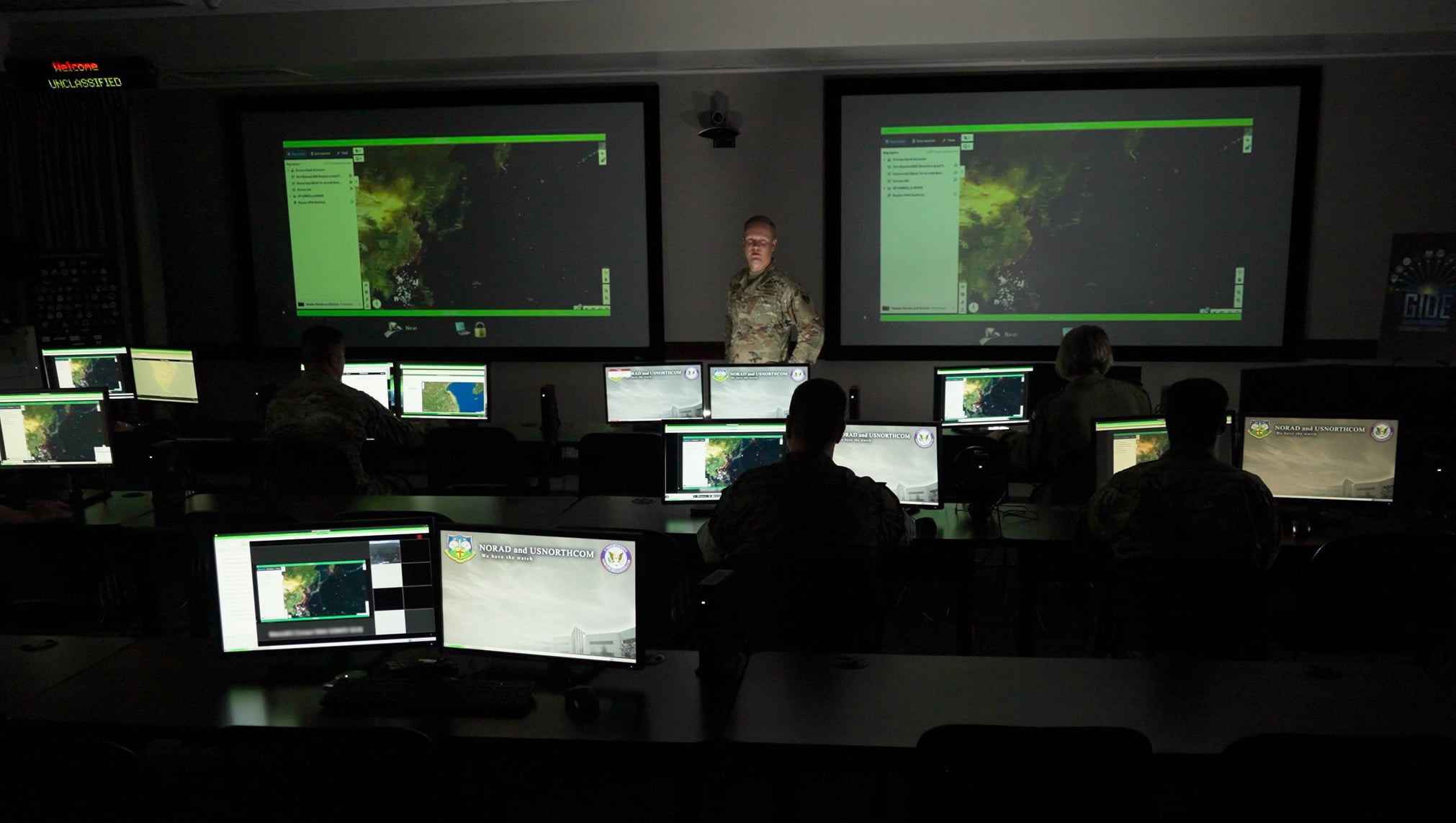The US military is testing a high-tech system, similar to the one shown in the 2002 Hollywood sci-fi movie, Minority Report. In the Tom Cruise film, future technology makes it possible for cops to catch criminals before a crime is committed.
The US Northern Command (NORTHCOM) conducted the third set of tests and simulations on the Global Information Dominance Experiments, or GIDE, last month.
Briefing the media on July 28, Air Force General Glen D. VanHerck, Commander of NORTHCOM, said the experiment prompted the department to find ways to enable faster decisions and provide more options by making new technologies more accessible, without revealing technical details of the classified experiment.

At the core of the experiment lies an AI-enabled software that will complement the US military’s decision-making within Combatant Commands and even the allied nations.
Palantir, the partner firm which is developing the software, said in a press release that the GIDE relies on “application programming interfaces (APIs) and our open data standard architecture”.
Referring to China and Russia as “two peer competitors — both nuclear-armed — that are competing against the US on a daily basis”, the Commander said that experiment focused on a peer competitor and centered a lot on contested logistics in scenarios where lines of communication, such as the Panama Canal, were challenged.
#COCOMSpotlight NORAD/NORTHCOM Gen. VanHerck: "Integrated deterrence is about using the right mix of technology, operational concepts & capabilities, all woven together in a networked way so that it is credible, flexible & formidable…"
See more here: https://t.co/nrYoKlnurg pic.twitter.com/rXk2JXBeuz
— US Strategic Command (@US_Stratcom) July 30, 2021
The GIDE Program
The GIDE Program was announced last year in December, in association with Palantir, a Colorado-based software company that specializes in big data analytics and has previously provided services to US intelligence agencies.
GIDE 1 took place with four Combatant Commands and later GIDE 2 was expanded to all 11 Combatant Commands.
The experiments aimed to achieve three key goals — domain awareness, information dominance, and decision superiority — to provide “timely information that drives coordinated action to thwart crisis”.

While domain awareness expands on what information is available to conduct real-time planning and mission execution, information dominance is crucial for faster and better knowledge than the adversary. The third goal is perhaps the most important, given how the quickest execution of a decision can dictate the difference between war and peace.
Building upon the goals, the GIDE 3 tested the US military’s domain awareness, integrated deterrence, information dominance and decision-making superiority, according to a Pentagon statement.
GIDE 3 enabled the Department of Defense to rapidly collaborate with all 11 combatant commands and across the department to see pertinent data and information, using a variety of sensors, AI, and machine learning.
The experiment also tested how the department uses information and data to increase decision space for leaders from the tactical level to the strategic level, the statement added.
Predicting The Future
Palantir in the press release described the experiment as “reliable technology that centralizes truth and powers fast decision making.”
Calling it the “ability to see days in advance,” VanHerck explained how AI technology gives him “decision space” and as an operational commander, he can use this to create deterrence options and provide the information to the Secretary of Defense Secretary or even the president.
“It’s not new information, it’s information that today is just not analyzed and processed until later in the time cycle. All we’re doing is taking it and sharing it and making it available sooner. This gives us days of advanced warning and ability to react,” he added.
The military is finding new ways to use technology to help commanders make better, faster decisions on the battlefield with software that brings together and analyzes information such as radar data from across the world, Air Force Gen. Glen VanHerck said. https://t.co/47SHj8BfTD
— Stars and Stripes (@starsandstripes) July 28, 2021
GIDE readies the US military and its combat missions across the world to make split-second decisions with high confidence in analyzed data.
“We’re shifting our focus away from pure defeat mechanisms for homeland defense toward earlier ‘deter and deny’ actions,” the Commander said.
Explaining how the technology will work, VanHerck said that the deterrence options that utilize force structure such as airplanes or ships, the data can have the information of the readiness, the availability or the capability of those ships available so any options you create, you’ll know if they’re available immediately.
This experiment has shed light on the increasing use of AI in combat drones, aircraft, bombers, submarines, tanks, and other autonomous weapons, which is shaping the future battlefield.

Companies like Palantir are proliferating around the world, providing technological solutions to militaries and intelligence services.
Displaying its commitment to creating, testing, and refining repeatable data workflows to help US commanders win, the manufacturer Palantir accepted that the dependency on AI/ML in military decision-making is growing.
A similar view was reflected by US Defense Secretary Lloyd Austin, as he noted in a July 13 speech that AI is key to preventing future conflicts as China — the primary “pacing threat” for the United States — increases its efforts to develop such technology.




